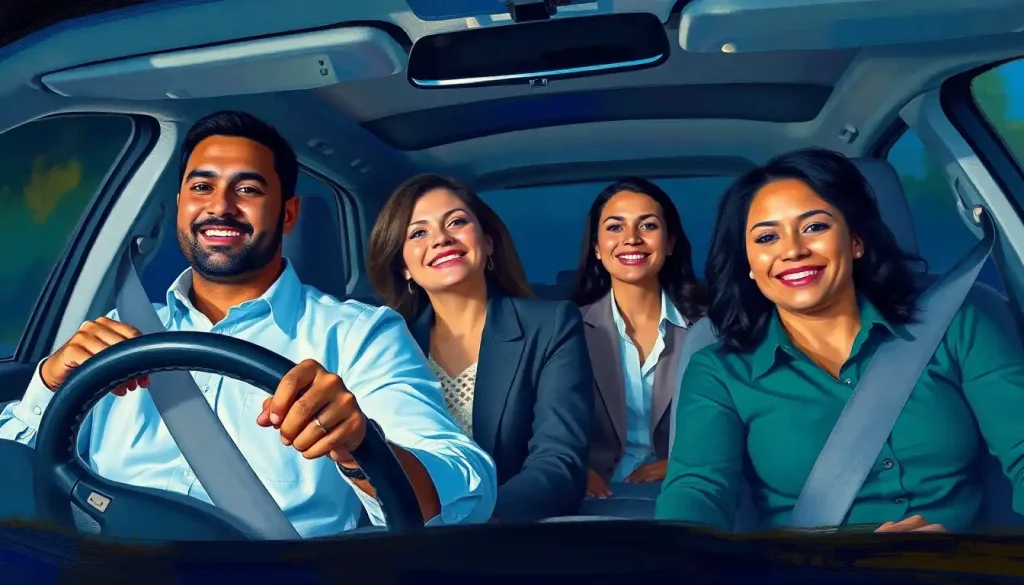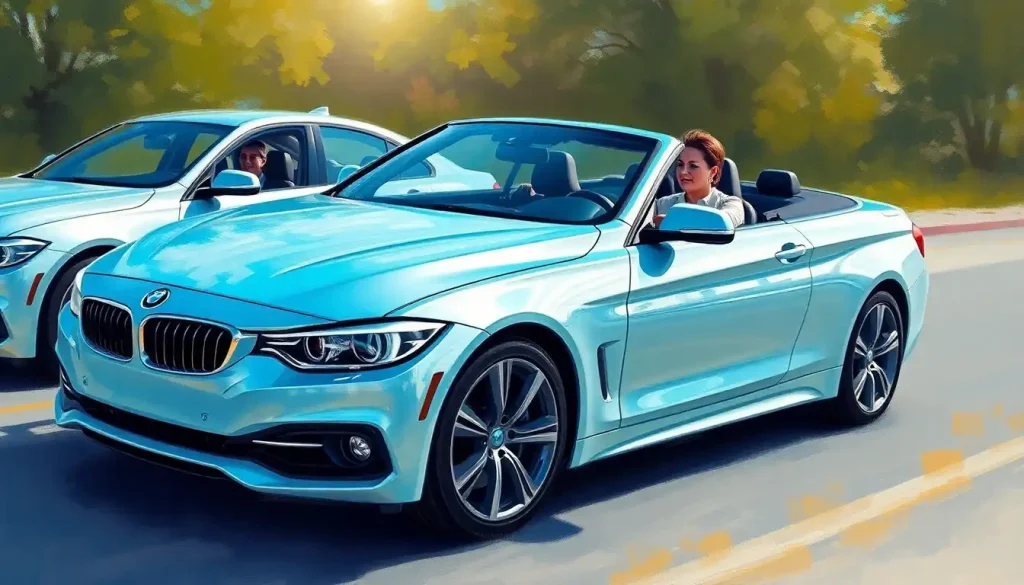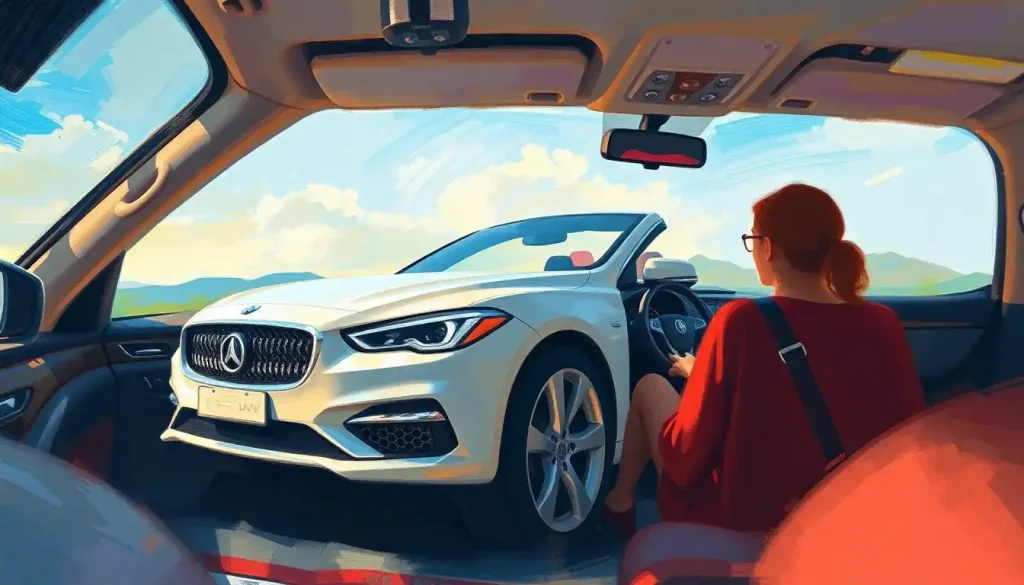Getting the best deal on your off-road dreams doesn’t have to feel like navigating a treacherous mountain trail, especially when you know how to tackle financing options and secure competitive interest rates. The world of UTV financing can be as exhilarating as the adventures these vehicles promise, but without proper knowledge, it might leave you feeling stranded in a financial quagmire. Let’s embark on a journey to demystify UTV interest rates and financing options, ensuring you’re well-equipped to make an informed decision that won’t leave your wallet in the dust.
Decoding the UTV Financing Landscape
Before we rev up our engines and dive into the nitty-gritty of UTV financing, let’s take a moment to understand what exactly we’re dealing with. UTV stands for Utility Task Vehicle, also known as a side-by-side or SxS. These rugged machines are designed to conquer challenging terrains while offering the comfort of side-by-side seating for two or more passengers. Whether you’re planning to use it for work on your property, weekend adventures, or a bit of both, financing a UTV requires a solid grasp of the current interest rate landscape.
The world of UTV interest rates is as diverse as the terrains these vehicles can tackle. Currently, average rates for UTV loans typically range from 4% to 36% APR, depending on various factors we’ll explore later. It’s worth noting that these rates can be slightly higher than those for traditional auto loans, primarily due to the specialized nature of UTVs and their classification as recreational vehicles.
Compared to other vehicle loans, UTV interest rates often fall somewhere between car loans and personal loans. They’re generally higher than car loans but potentially lower than unsecured personal loans. This positioning reflects the unique risk profile associated with UTV financing. After all, lenders consider these vehicles as “toys” that might be more susceptible to damage or neglect than a daily driver.
The current market influences UTV interest rates in several ways. Economic factors, such as the Federal Reserve’s monetary policy, can cause rates to fluctuate. Additionally, the growing popularity of UTVs has led to increased competition among lenders, potentially driving rates down in some cases. However, the specialized nature of these vehicles still contributes to rates that are typically higher than those for standard automobiles.
Exploring Your UTV Financing Options
When it comes to financing your off-road beast, you’ve got more options than a UTV has gears. Let’s shift through the various financing avenues available to potential UTV owners.
Manufacturer financing programs often serve as the first pit stop for many buyers. Major UTV manufacturers like Polaris, Can-Am, and Yamaha frequently offer promotional financing deals, sometimes including tempting low or even 0% APR for qualified buyers. These programs can be particularly attractive if you’re eyeing a new model and have a stellar credit score. However, be sure to read the fine print, as these deals may come with shorter terms or require a substantial down payment.
Banks and credit unions represent another solid option for UTV financing. If you have an existing relationship with a financial institution, you might snag a preferential rate. Credit unions, in particular, often offer competitive rates to their members. Don’t be shy about exploring SXS interest rates with multiple institutions to find the best deal.
Online lenders specializing in powersports vehicles have carved out a niche in the UTV financing world. These lenders understand the unique aspects of UTV ownership and may offer tailored loan products. Their online platforms often provide quick approvals and competitive rates, making them worth considering in your financing journey.
Personal loans can also be used to finance a UTV purchase. While they typically come with higher interest rates than secured loans, they offer flexibility in how you use the funds. This option might be particularly appealing if you’re considering a used UTV from a private seller or if you need additional funds for accessories and gear.
Factors That Shape Your UTV Interest Rate
Now that we’ve mapped out the financing terrain, let’s zoom in on the factors that influence your individual UTV interest rate. Understanding these elements can help you navigate towards the best possible deal.
Your credit score stands as the beacon guiding lenders’ decisions. A higher credit score typically translates to lower interest rates, as it demonstrates your reliability in managing debt. For instance, borrowers with excellent credit (typically 720 or above) might secure rates in the single digits, while those with fair or poor credit could face rates in the high teens or even twenties.
The size of your down payment can also significantly impact your interest rate. A larger down payment reduces the lender’s risk, potentially leading to a more favorable rate. It’s not uncommon for lenders to require a down payment of 10-20% for UTV loans, but putting down more could result in better terms.
Loan term length plays a crucial role in determining your interest rate. Generally, shorter loan terms come with lower interest rates but higher monthly payments. Conversely, longer terms might offer lower monthly payments but at the cost of a higher overall interest rate. It’s a balancing act between monthly affordability and long-term costs.
The choice between new and used UTVs can also affect your financing terms. New UTVs often come with lower interest rates and more attractive manufacturer financing options. Used UTVs, while potentially more budget-friendly upfront, might carry slightly higher interest rates due to the increased risk associated with older vehicles.
Strategies to Secure the Best UTV Interest Rates
Armed with knowledge about the factors influencing UTV interest rates, it’s time to develop a game plan for securing the best possible deal. Think of this as plotting your course through a challenging trail – with the right approach, you’ll reach your destination successfully.
First and foremost, focus on improving your credit score before applying for a UTV loan. This might involve paying down existing debts, correcting any errors on your credit report, or simply waiting a few months to allow recent positive credit activities to reflect in your score. Even a small improvement in your credit score could translate to significant savings over the life of your loan.
Don’t settle for the first financing offer you receive. Shop around and compare rates from multiple lenders. This includes manufacturer financing, banks, credit unions, and online lenders. Each may have different criteria and offers, and you won’t know which is best until you explore your options. Remember, Can-Am interest rates might differ from those offered by other manufacturers or financial institutions.
Once you’ve gathered a few offers, don’t be afraid to negotiate. Lenders often have some flexibility in their rates, especially if you have a strong credit profile or a competing offer. Sometimes, simply asking for a better rate can yield positive results.
Consider making a larger down payment if possible. Not only does this reduce the amount you need to borrow, but it also demonstrates your commitment to the purchase, potentially leading to more favorable terms. If you’re eyeing a $20,000 UTV, for example, increasing your down payment from 10% to 20% could significantly impact your interest rate and monthly payments.
Beyond Interest Rates: Additional UTV Financing Considerations
While securing a competitive interest rate is crucial, it’s not the only factor to consider when financing your UTV. Let’s explore some additional aspects that could impact your overall financial picture.
Understanding fees and charges associated with UTV loans is essential. These might include origination fees, documentation fees, or prepayment penalties. Some lenders may advertise attractive interest rates but make up for it with higher fees. Always ask for a complete breakdown of all costs associated with the loan.
Reading the fine print in loan agreements is about as exciting as watching paint dry, but it’s absolutely crucial. Pay close attention to terms regarding late payments, default conditions, and any clauses that could allow the lender to change the terms of the loan. If something isn’t clear, don’t hesitate to ask questions.
Prepayment penalties and early payoff options are worth considering, especially if you think you might be able to pay off the loan ahead of schedule. Some loans may charge a fee for early payoff, potentially negating the interest savings you’d gain by paying early. Look for loans that offer flexibility in this regard.
Insurance requirements can significantly impact your overall costs. Most lenders will require comprehensive insurance coverage for financed UTVs. Shop around for insurance quotes before finalizing your purchase to get a complete picture of your monthly expenses. Some insurers may offer discounts if you bundle your UTV insurance with other policies.
Charting Your Course to UTV Ownership
As we reach the end of our journey through the landscape of UTV interest rates and financing options, let’s recap the key points to remember:
1. UTV interest rates typically range from 4% to 36% APR, influenced by factors like credit score, down payment, and loan term.
2. Financing options include manufacturer programs, bank loans, online lenders, and personal loans.
3. Your credit score, down payment amount, and loan term significantly impact your interest rate.
4. Strategies for securing better rates include improving your credit score, shopping around, and considering a larger down payment.
5. Look beyond interest rates to understand all associated fees and terms of the loan agreement.
Financing a UTV is more than just a transaction; it’s an investment in your adventures and potentially your work. Take the time to thoroughly research and compare your options. Don’t rush into a decision based solely on getting behind the wheel as quickly as possible. Remember, the goal is to find a financing solution that aligns with your financial situation and allows you to enjoy your UTV without undue financial stress.
Whether you’re eyeing a Rivian electric adventure vehicle or a more traditional UTV, the principles of smart financing remain the same. By applying the knowledge and strategies we’ve discussed, you’ll be well-equipped to navigate the financing process and secure a deal that works for you.
As you embark on this exciting journey towards UTV ownership, keep in mind that the best deal isn’t always the one with the lowest interest rate. Consider the total cost of ownership, including insurance, maintenance, and potential modifications. And most importantly, choose a financing option that allows you to hit the trails with peace of mind, knowing you’ve made a sound financial decision.
Happy trails and smart financing to you!
References:
1. Consumer Financial Protection Bureau. “What is a debt-to-income ratio? Why is the 43% debt-to-income ratio important?” Available at: https://www.consumerfinance.gov/ask-cfpb/what-is-a-debt-to-income-ratio-why-is-the-43-debt-to-income-ratio-important-en-1791/
2. Federal Trade Commission. “Understanding Vehicle Financing.” Available at: https://www.consumer.ftc.gov/articles/0056-understanding-vehicle-financing
3. MyFICO. “What’s in my FICO Scores?” Available at: https://www.myfico.com/credit-education/whats-in-your-credit-score
4. National Automobile Dealers Association. “NADA Guides.” Available at: https://www.nadaguides.com/
5. Polaris Industries Inc. “Polaris Adventures.” Available at: https://adventures.polaris.com/
6. Yamaha Motor Corporation, U.S.A. “Yamaha Financial Services.” Available at: https://www.yamahamotorsports.com/financial-services
7. Can-Am Off-Road. “Can-Am Financing.” Available at: https://can-am.brp.com/off-road/us/en/shopping-tools/financing.html
8. U.S. Federal Reserve. “Consumer Credit – G.19.” Available at: https://www.federalreserve.gov/releases/g19/current/
9. J.D. Power. “Powersports Finance: Understanding the Market.” Available at: https://www.jdpower.com/business/press-releases/2021-us-powersports-finance-satisfaction-study
10. Insurance Information Institute. “Motorcycle, ATV, and Off-Road Vehicle Insurance.” Available at: https://www.iii.org/article/motorcycle-atv-and-off-road-vehicle-insurance












Would you like to add any comments? (optional)